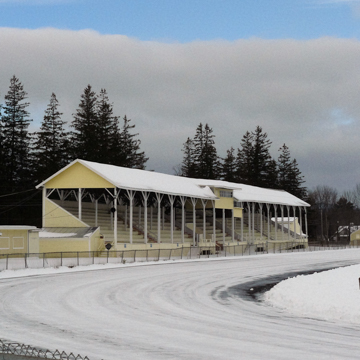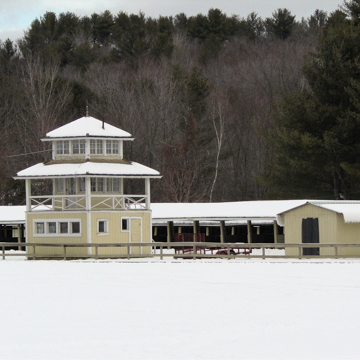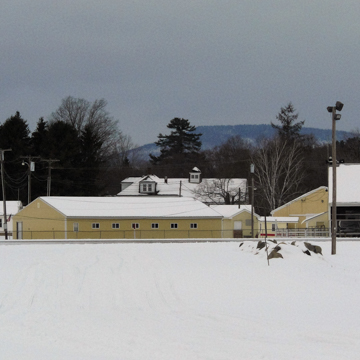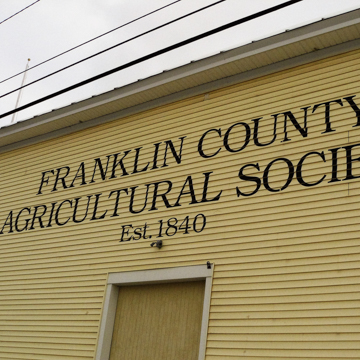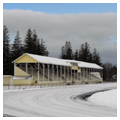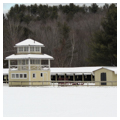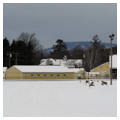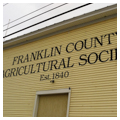Located eighty miles north of Portland is the Town of Farmington, the seat of Franklin County, which was founded in 1776. Veterans of the American Revolution seeking to escape the economic hardships of coastal towns like Portland and Boston were lured by the fertile land along western Maine’s Sandy River. Rich in hardwood and softwood forests, with good alluvial soil, Farmington became a bustling hub for lumber and agriculture, including livestock and the production of corn, grain, and hay. In 1840 the Maine State Legislature granted the Franklin County Agricultural Society a charter for the purpose of creating a fair, which has been held annually ever since.
The Agricultural Society’s first fair was held in the “Center Village” and featured a cattle show. Eighteen years later the three-day fair moved to Norton Flats, a twenty-acre rented site located a mile outside Farmington. By 1859 horse racing had been included in the fair program in addition to livestock showing, cooking exhibits, and displays of farming equipment. When the North Flats lease expired in 1878, the Society purchased an eighteen-acre tract on High Street and built exhibit halls and a covered grandstand for horse racing, which remains there today. Subesequent additions to the fairgrounds include a parking lot (1921) and a car barn (1970).
In the second half of the nineteenth century, farm abandonment plagued Franklin County along with the rest of New England. However, as the County Seat and home of both a normal school (now the University of Maine at Farmington) and the County Fair, the Town of Farmington thrived. Today the fairgrounds are over twenty acres and contain over thirty-eight buildings or event sites including the half-mile horse track that also hosts truck pulls and demolition derbies. Nearby is the racehorse barn and a pari-mutuel betting building. As in the past there are sheep and hog barns, draft horse barns, horse show rings, and cattle and poultry sheds. There is also a blacksmith shop, the Little Red Schoolhouse (also known as Briggs Schoolhouse), and a maple syrup house. Almost all the buildings are frame structures that are painted white (with the exception of the Little Red Schoolhouse), and apparently located on the site without any guiding plan. In addition to horseracing and livestock displays, the current six-day October fair includes a 4-H Club Show, oxen and steer pulls, baking contests, and, of course, country music.
References
Day, Clarence A. Farming in Maine: 1860–1940.Orono: University of Maine Press, 1963.
Ross, Mildred Luce, and Donald Fletcher. History of the Farmington Fair, 1840–1990.Farmington, ME: Franklin Printing, 1991.
Coombs, Melanie Taylor, and Wendy Simpson. “Farmington: Franklin County’s Shiretown-Brief History.” Maine Memory Network. Maine Historical Society, 2000-2016. http://www.mainememory.net.

